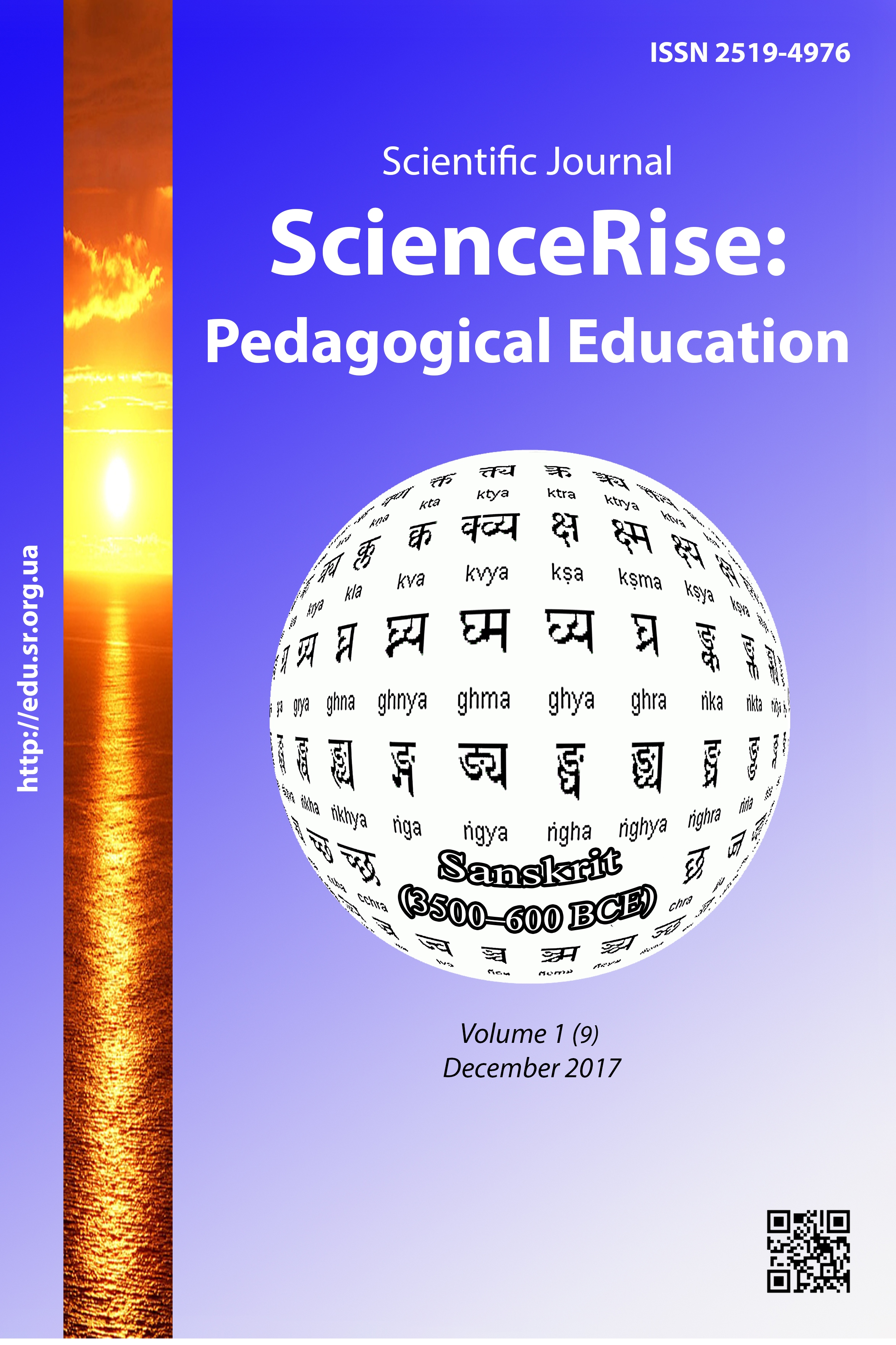Contemporary state of teaching japanese language for academic purposes in higher educational insitutions in ukraine
DOI:
https://doi.org/10.15587/2519-4984.2017.91032Keywords:
Japanese language for academic purposes, West, East, communicative-pragmatic approach, pop-cultureAbstract
The article considers the contemporary state of teaching Japanese academic speech for future philologists and also gives retrospective review of the process of Ukrainian Japanese studies formation. The role of pop-culture in the formation of motivational stimulus of mastering Japanese language in Europe and throughout the World is outlined. The problem of motivation of studying Japanese in Ukraine and European countries, some differences in approaches to education in the East and West are analyzed. The dependence of studying Japanese on the dwelling place of students and type of educational institution is grounded. The role of Japanese Foundation and Ukrainian Community of teachers of Japanese in favoring the teaching Japanese in Ukraine is underlined. The level of formation of Japanese communicative competence in academic sphere is determined on the base of analysis of questioning students of linguistic HEI of Ukraine. The article elucidates the causes of poor progress of the development of Japanese communicative competence in students of linguistic specialties in academic sphere to improve the process of teaching Japanese in academic sphere
References
- The Japan Foundation. Available at: http://www.jpf.go.jp/index.html
- Gans, H. J. (1985). American Popular Culture and High Culture in a Changing Class Structure. Prospects, 10, 17–37. doi: 10.1017/s0361233300004051
- McQuail, D., Cmwley, D., Mitehell, D. (1994). Mass Communication and Public Interest: Towards Social Theory for Media Structure and Performance. Communication Theory Today. Polity Press, 241–254.
- Bondarenko, I. P. (Ed.) (2010). Movni ta literaturni zv’yazky Ukrainy z krainamy Shodu. Kyiv: Vydavnychyi dim Dmytra Burago, 472.
- Bondarchuk, T. O. (2004). Do pytannya pro typologiyu leksemno-semantychnyh odynyts yaponskoi movy. Visnyk KNLU. Seriya: Pedagogika ta psyhologiya, 7, 220–227.
- Golubets, V. V. (1998). Kompleks testovyh zavdan dlya formuvannya gramatychnyh navychok produktyvnyh vydiv movlennevoi diyalnosti yaponskoi movy. Visnyk KDLU. Seriya: Pedagogika ta psyhologiya, 1, 169–174.
- Myhailyuk, G. V. (2010). Navchannya maibytnyh uchyteliv yaponskoi movy rozuminnya gramatychnyh zasobiv vyrazhennya modalnosti u protsesi chytannya. Kyiv, 25.
- Ukrayinsko-Yaponskyi tsentr NTUU “KPI”. Available at: http://uajc.kpi.ua/uk/pro-nas/pro-nas-in.html
- West and East: 5 Main Differences in Approach towards Education. Available at: https://www.thepensters.com/blog/west-east-education/
- Nechaeva, L. T. (2000). Nauchno-metodicheskie osnovy struktury i soderzhaniya uchebnikov yaponskogo yazyka dlya russkogovoryaschih (vysshaya shkola). Moscow, 80.
Downloads
Published
How to Cite
Issue
Section
License
Copyright (c) 2017 Оксана Висилівна Асадчих

This work is licensed under a Creative Commons Attribution 4.0 International License.
Our journal abides by the Creative Commons CC BY copyright rights and permissions for open access journals.
Authors, who are published in this journal, agree to the following conditions:
1. The authors reserve the right to authorship of the work and pass the first publication right of this work to the journal under the terms of a Creative Commons CC BY, which allows others to freely distribute the published research with the obligatory reference to the authors of the original work and the first publication of the work in this journal.
2. The authors have the right to conclude separate supplement agreements that relate to non-exclusive work distribution in the form in which it has been published by the journal (for example, to upload the work to the online storage of the journal or publish it as part of a monograph), provided that the reference to the first publication of the work in this journal is included.








